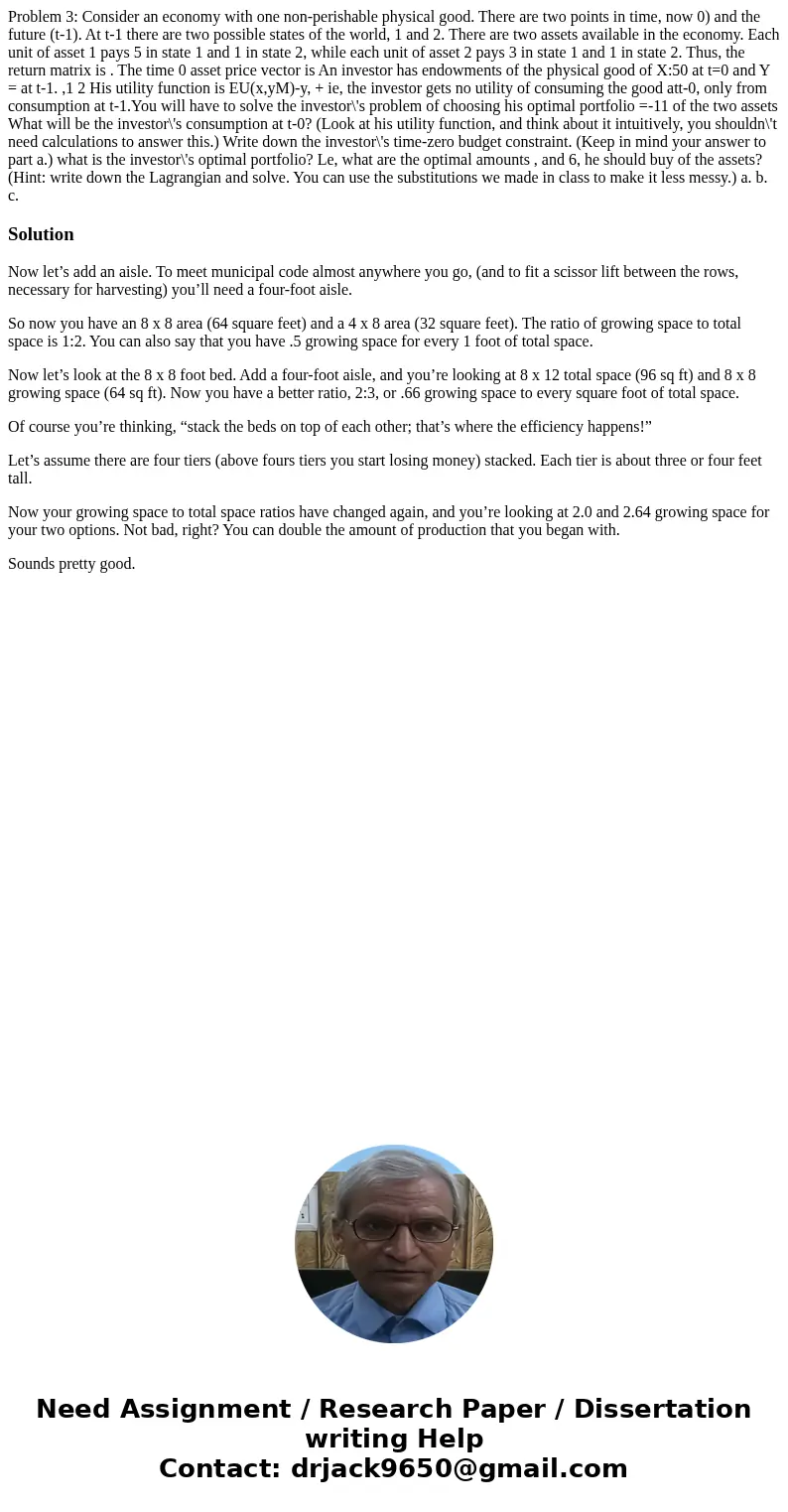Problem 3 Consider an economy with one nonperishable physica
Solution
Now let’s add an aisle. To meet municipal code almost anywhere you go, (and to fit a scissor lift between the rows, necessary for harvesting) you’ll need a four-foot aisle.
So now you have an 8 x 8 area (64 square feet) and a 4 x 8 area (32 square feet). The ratio of growing space to total space is 1:2. You can also say that you have .5 growing space for every 1 foot of total space.
Now let’s look at the 8 x 8 foot bed. Add a four-foot aisle, and you’re looking at 8 x 12 total space (96 sq ft) and 8 x 8 growing space (64 sq ft). Now you have a better ratio, 2:3, or .66 growing space to every square foot of total space.
Of course you’re thinking, “stack the beds on top of each other; that’s where the efficiency happens!”
Let’s assume there are four tiers (above fours tiers you start losing money) stacked. Each tier is about three or four feet tall.
Now your growing space to total space ratios have changed again, and you’re looking at 2.0 and 2.64 growing space for your two options. Not bad, right? You can double the amount of production that you began with.
Sounds pretty good.

 Homework Sourse
Homework Sourse